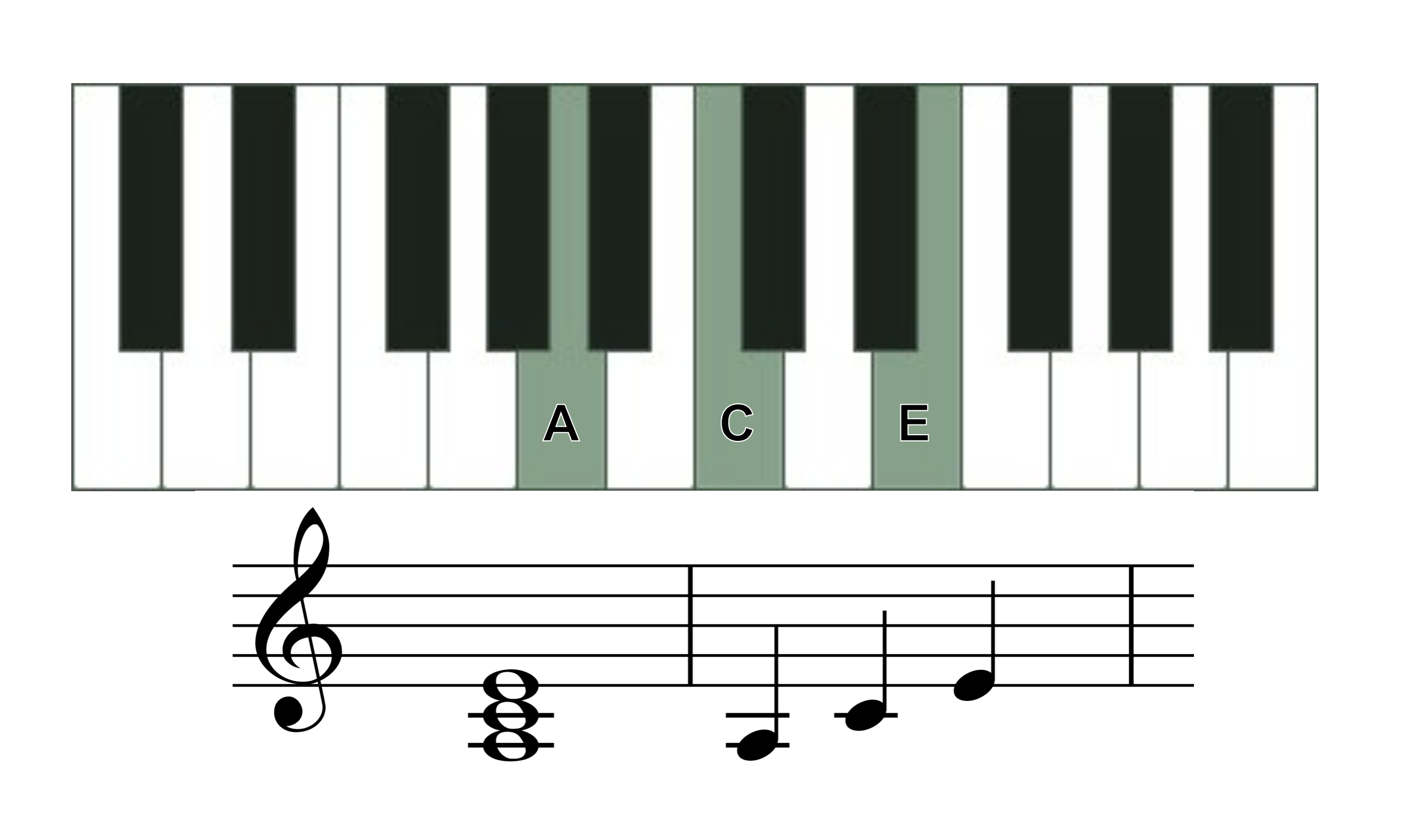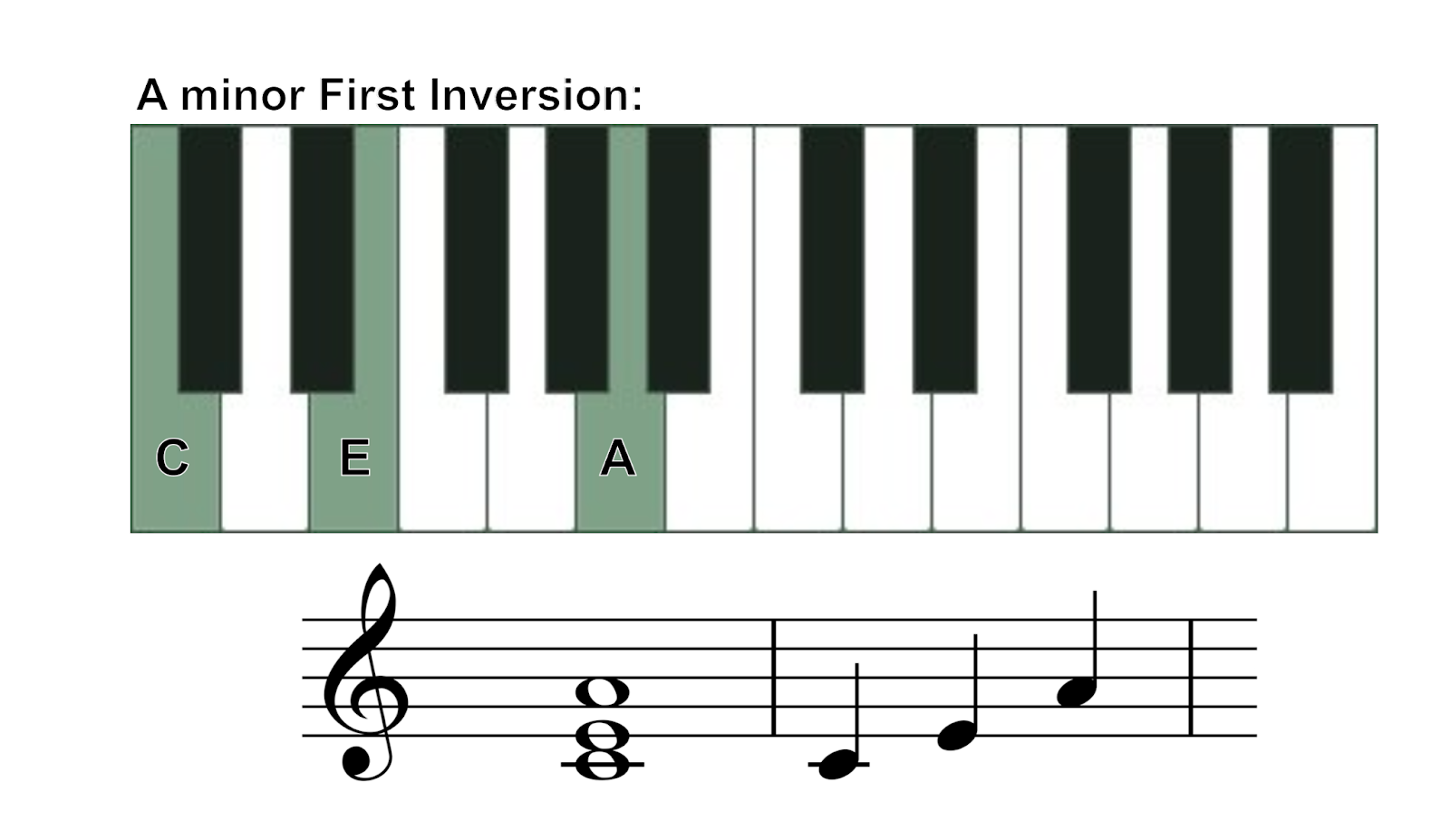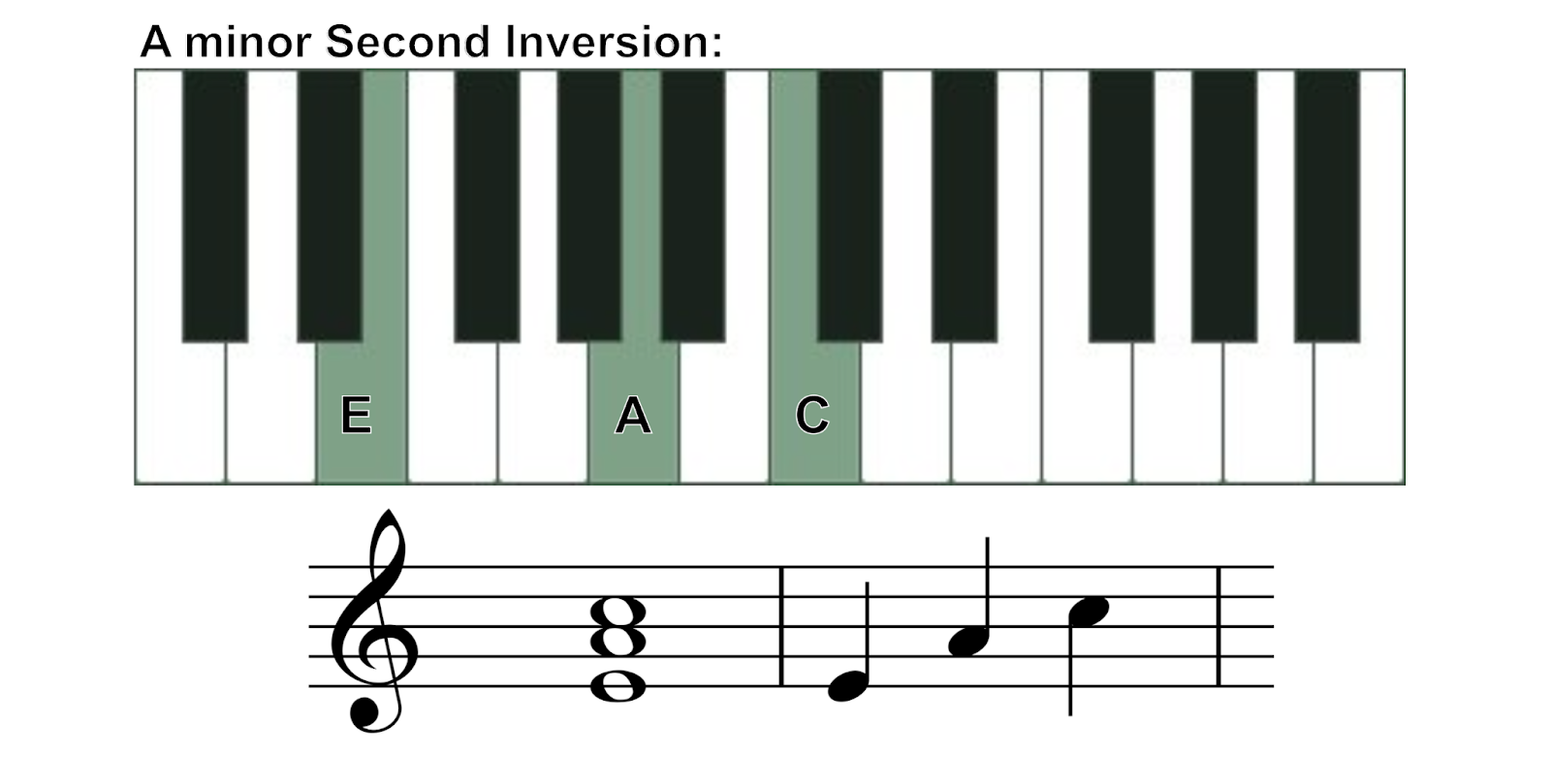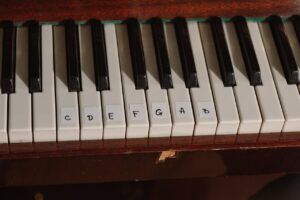Want to get started with minor chords? Skoove has got you covered, A minor is a great place to start. This triad can add emotion and weight to your music. In this article we will look at how to play the A minor chord, all of its inversions and which fingers to use for each. We will also take a look at some common A min chord progressions and some great songs that use it so you can perfect it in no time. Let’s get started!
How to play the A minor chord in root position
To play A minor, you only need three white keys: A, C and E. Start by finding A which is the white key right before the last of the three black keys. From there, skip up to C, then E and play them together.

The A minor chord is made of three notes: A, C and E.
These notes are called the root (A), third (C) and fifth (E). Together, they create a somber and emotional sound.
To play this chord in its root position (basic form) with your right hand, use these fingers:
- E – Fifth finger (5)
- C – Third finger (3)
- A – Thumb (1)
For the left hand, use the following fingers:
- E – Thumb (1)
- C – Third finger (3)
- A – Fifth finger (5)
What are the inversions of the A minor chord?
The inversions of an A minor chord can be found by rearranging the order the notes are played in. Chord inversions let you to play the same chord with a different character.
How to play A minor 1st inversion?
To play the first inversion of the A minor piano chord, start with C as the bottom note. Next, play E and finally add an A on top. Notice how this gives the chord a new sound?

For the right hand, use these fingers:
- C – Thumb (1)
- E – Middle finger (3)
- A – Fifth finger (5)
For the left hand, use these fingers:
- C – Fifth finger (5)
- E – Third finger (3)
- A – Thumb (1)
How to play A minor 2nd inversion?
To play the second inversion of the A minor chord, start with E as the low note. Then, add an A and finally, add C as the highest note. This inversion gives the chord a new texture and is perfect for smooth chord transitions.

For the right hand, use these fingers:
- E – Thumb (1)
- A – Middle finger (3)
- C – Fifth finger (5)
For the left hand, use these fingers:
- E – Fifth finger (5)
- A – Third finger (3)
- C – Thumb (1)
Common chord progression in the key of A minor
A minor chord progressions are found in lots of music, from rock and pop to jazz, classical and more. An Am chord progression often has chords like Am, C, G, and E. Here are some fun A minor chord progressions:
- Am – F – C – G
- Am – G – C – E
- Am – Em – F – Dm
- Am – F – G – E
These sequences are a great place to start when you’re learning. To put your knowledge of piano chords to the test check out the Skoove’s tailor made beginner chord progression courses.
Popular songs to play with the Am piano chord
Madonna – 4 Minutes
Queen – Another One Bites the Dust
David Guetta – Baby Don’t Hurt Me
Piano chords generator
💡 If you are reading this from a mobile device, rotate it to display the tool in full width.
1. Click on “Chords”
2. Choose the “Root” of the chord
3. Choose the “Chord qualities” (major, minor, etc.)
4. Click “Display”
Author of this blog post:
Matthew Dickman

With over a decade of experience in music education Matthew holds a BA in Music from Paul McCartney’s LIPA and an MA in Composition from the University of Salford. Mathew has developed a distinctive compositional voice and approach to music theory education through his research and work in the music industry. Matthew’s writing for Skoove combines experience from orchestral and media composition, and as a gigging jazz musician, to create a wholistic and accessible pedagogy for musicians of any level. Away from music, he enjoys reading and exploring nature to expand his horizons and knowledge contributing to his holistic teaching style.













